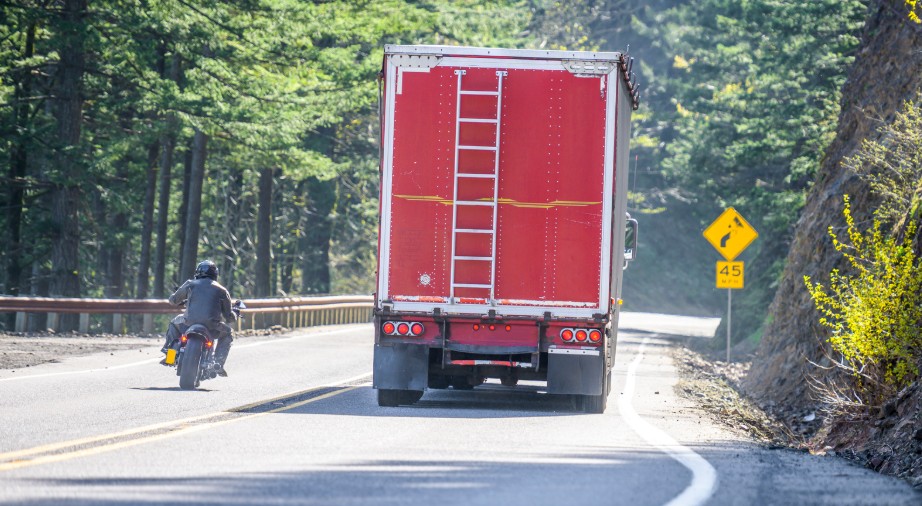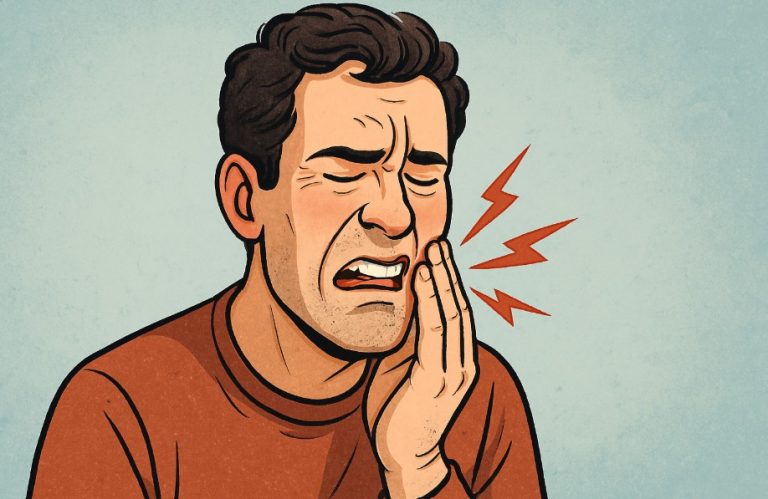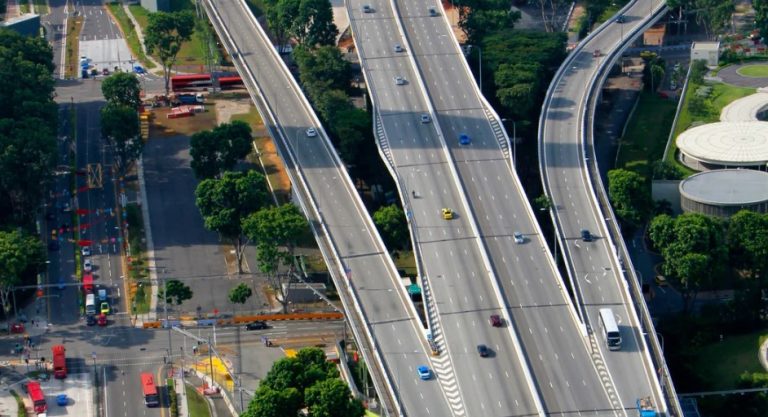Why Should You Allow Extra Room While Overtaking a Motorcyclist on a Windy Day?
Overtaking a motorcyclist requires careful judgment, but in windy conditions, it becomes even more critical to allow extra space. Strong gusts of wind can significantly affect a motorcycle’s stability, making it harder for riders to maintain control.
Drivers must be aware of how wind impacts two-wheeled vehicles and adjust their overtaking technique accordingly. Understanding why extra room is necessary can help prevent accidents and improve road safety. This guide explores the risks involved and the best practices for overtaking motorcyclists safely.
What Is the Correct Answer to This DVSA Theory Test Question?
The UK DVSA Cars Theory Practice Test includes an important question regarding road safety when overtaking motorcyclists in windy conditions. The question asks:
Why should you allow extra room while overtaking a motorcyclist on a windy day?
A: The rider may turn off suddenly to get out of the wind
B: The rider may be blown in front of you
C: The rider may stop suddenly
D: The rider may be travelling faster than normal
The correct answer is B: The rider may be blown in front of you.
Motorcyclists are more vulnerable to external forces such as wind, which can cause them to swerve unexpectedly.
Unlike cars, which have four points of contact with the road, motorcycles rely on just two wheels for balance. This makes them highly susceptible to sudden gusts of wind, particularly crosswinds, which can push them into the path of other vehicles.
When overtaking a motorcyclist on a windy day, failing to allow enough space could lead to a collision if the rider is unexpectedly pushed sideways.
Understanding this risk is crucial for all drivers, ensuring that they approach overtaking manoeuvres with caution and allow sufficient room for the motorcyclist to adjust their position safely.
Why Can Wind Make Overtaking a Motorcyclist Dangerous?

Wind affects different vehicles in various ways, but motorcycles are particularly at risk due to their lightweight structure and lack of enclosed protection.
When a strong gust hits a motorcycle from the side, it can cause instability, forcing the rider to compensate by steering or shifting their weight.
In open areas such as bridges, coastal roads, or motorways, the force of the wind can be unpredictable, changing direction suddenly. If a motorcyclist is caught off guard, they may involuntarily move towards the vehicle overtaking them, increasing the chance of an accident.
Drivers who do not anticipate these conditions may find themselves too close to the motorcycle, leaving little room for either party to react if the motorcyclist is forced off course.
How Does Wind Impact a Motorcyclist’s Stability?
Wind can affect motorcycles in several ways depending on its direction and intensity.
- Crosswinds: These pose the greatest risk to motorcyclists because they hit the rider from the side, potentially pushing them off their intended path. The force of a strong crosswind can be sudden and unpredictable, requiring quick adjustments to maintain stability.
- Headwinds: When wind is coming directly towards the motorcyclist, it slows down their speed and forces them to lean forward for better control. While headwinds are not as dangerous as crosswinds, they can still cause instability.
- Tailwinds: A wind blowing from behind a motorcyclist can increase their speed unexpectedly, making it harder to slow down or stop. This can be dangerous, particularly if they are approaching an intersection or need to reduce speed for a turn.
Large vehicles, such as lorries and buses, can also create their own wind turbulence, which affects motorcycles when they pass. The sudden rush of air can destabilise the motorcyclist, especially if they are overtaken too closely.
What Does the Highway Code Say About Overtaking Motorcycles?

The UK Highway Code provides specific rules and guidance on overtaking motorcycles to ensure the safety of both motorcyclists and drivers. Motorcycles are much smaller and more vulnerable than cars, meaning overtaking them requires extra care, particularly in adverse weather conditions such as strong winds.
Key Rules for Overtaking Motorcycles:
According to Rule 162 of the Highway Code, before overtaking any vehicle, including motorcycles, drivers must:
- Ensure the road ahead is clear and free from oncoming traffic.
- Check mirrors and blind spots for other vehicles, especially smaller ones like motorcycles that can be harder to spot.
- Signal clearly and in good time to let other road users know of their intention to overtake.
- Judge the speed of the motorcycle, as they can accelerate or decelerate quickly.
In addition, Rule 163 highlights the importance of giving plenty of space when overtaking motorcycles. It states that drivers should:
- Allow at least 1.5 metres (5 feet) of space when passing a motorcyclist.
- Give even more space in windy or wet conditions, as motorcyclists may wobble or be pushed sideways by strong gusts.
- Avoid cutting back in too soon after overtaking to prevent forcing the motorcyclist to brake or swerve.
Additional Considerations for Motorcyclists
Rule 211 of the Highway Code reminds drivers that motorcyclists are more vulnerable than other road users. Drivers should always:
- Be particularly aware at junctions and roundabouts, as motorcycles can be easily overlooked.
- Check carefully before changing lanes, as motorcycles may be in blind spots.
- Be patient and avoid aggressive manoeuvres, giving motorcyclists time to react to changing conditions.
By following these rules, drivers can significantly reduce the risk of accidents and ensure safer roads for everyone.
What Should Drivers Do When Overtaking a Motorcyclist in Windy Conditions?
Overtaking a motorcyclist in windy conditions requires additional precautions to ensure safety for both the driver and the rider.
- Assess Wind Conditions: Be aware of strong gusts, particularly in open areas such as bridges, motorways, and coastal roads. Watch for signs of crosswinds affecting other vehicles.
- Increase Following Distance: Leaving extra space behind the motorcycle allows for better reaction time if the rider swerves.
- Check Surroundings: Look for large vehicles, as their turbulence can further destabilise a motorcycle. Avoid overtaking if a lorry or bus is passing the motorcyclist at the same time.
- Give Extra Room When Passing: The recommended safe passing distance for motorcyclists is at least 1.5 metres, but in windy conditions, this should be increased.
- Avoid Sudden Acceleration: Overtake smoothly to prevent startling the motorcyclist, who may already be struggling to maintain control due to the wind.
By taking these steps, drivers can reduce the risks associated with overtaking in windy weather and ensure the safety of vulnerable road users.
What Are Other Road Hazards That Affect Motorcyclists in Windy Weather?

Windy weather presents significant challenges for motorcyclists, but wind alone is not the only hazard they face. A combination of road conditions, environmental factors, and interactions with other vehicles can make riding particularly dangerous.
Understanding these hazards can help drivers anticipate potential risks and take necessary precautions when sharing the road with motorcyclists.
Turbulence From Large Vehicles
One of the biggest risks for motorcyclists in windy conditions is the turbulence created by large vehicles such as lorries, buses, and vans.
When a motorcyclist is overtaken by or passes one of these larger vehicles, the sudden change in air pressure can create strong gusts of wind. These turbulent winds can cause a motorcycle to wobble or swerve unexpectedly, making it difficult for the rider to maintain control.
Drivers of larger vehicles must be especially cautious when overtaking motorcyclists in high winds. They should leave extra space and overtake smoothly to minimise the risk of destabilising the motorcycle.
Debris on the Road
High winds can blow loose debris such as leaves, branches, litter, and even gravel onto the road. Unlike cars, which have four wheels for stability, motorcycles rely on just two points of contact, making them more vulnerable to skidding or losing balance when riding over debris.
In rural areas, strong winds can also knock down tree branches or other obstacles, forcing motorcyclists to swerve suddenly to avoid them.
Drivers must remain aware of these potential hazards and give riders enough space in case they need to manoeuvre unexpectedly.
Slippery or Uneven Road Surfaces
Windy conditions are often accompanied by rain, which can make roads slippery and dangerous for motorcyclists. Painted road markings, drain covers, and manhole covers become especially hazardous when wet, as they offer less traction for motorcycle tyres.
Additionally, motorcyclists may face difficulties when riding on uneven road surfaces, potholes, or loose gravel, all of which become more challenging in windy weather.
Drivers should keep a safe following distance and be prepared for sudden movements from motorcyclists who may need to adjust their position to avoid these hazards.
What Defensive Driving Techniques Help Ensure Motorcyclist Safety?
Defensive driving is essential for ensuring the safety of motorcyclists, especially in challenging weather conditions such as strong winds.
Unlike cars, motorcycles are more vulnerable to external forces, making it crucial for drivers to adopt proactive driving habits that help prevent accidents. By staying alert, anticipating risks, and allowing sufficient space, drivers can create a safer road environment for motorcyclists.
1. Stay Alert and Observant
One of the most important defensive driving techniques is maintaining constant awareness of the road and surrounding vehicles.
Motorcycles are smaller than cars and can easily be overlooked, especially in blind spots or heavy traffic. In windy conditions, riders may need to adjust their position frequently, making it even more important for drivers to check mirrors and blind spots before making lane changes or overtaking.
Drivers should also pay attention to road signs that indicate high-wind zones, particularly on bridges, motorways, and open country roads where strong gusts can be more severe.
Recognising these areas allows drivers to anticipate potential difficulties for motorcyclists and adjust their driving accordingly.
2. Keep a Safe Following Distance
Motorcyclists may need to react suddenly to road hazards, such as debris, potholes, or strong gusts of wind.
A defensive driver ensures they maintain at least a two-second gap behind a motorcycle in normal conditions and extend this to four seconds or more in windy or wet weather.
Keeping a greater following distance allows for better reaction time, reducing the risk of rear-end collisions if a motorcyclist swerves or brakes unexpectedly.
Tailgating is especially dangerous around motorcycles, as sudden braking could lead to the rider losing control.
3. Anticipate the Rider’s Actions
Unlike cars, motorcycles require riders to use their whole body to balance and control the vehicle. This means that sudden wind gusts, uneven road surfaces, or even passing lorries can cause them to shift position without warning.
Drivers should be prepared for these movements by:
- Avoiding aggressive overtaking that could startle the rider.
- Leaving extra space when passing to allow for potential swaying due to wind.
- Being patient in traffic, as motorcyclists may take extra caution in difficult conditions.
By anticipating these actions, drivers can prevent dangerous situations and give motorcyclists the room they need to adjust safely.
4. Reduce Speed in High Winds
Speed plays a critical role in maintaining control during windy conditions. High speeds can make it harder to react to sudden movements from a motorcyclist affected by wind. Defensive drivers adjust their speed based on the conditions, especially in areas known for strong crosswinds.
Slower speeds provide better handling, improved braking distance, and more time to react to changes in a motorcyclist’s position. Additionally, keeping a steady speed rather than accelerating suddenly when overtaking helps prevent destabilising the rider.
5. Use Indicators and Signals Clearly
Good communication on the road is key to preventing misunderstandings and dangerous situations. Defensive drivers use clear and timely indicators when turning, overtaking, or changing lanes. This allows motorcyclists to anticipate the driver’s actions and position themselves safely.
Failing to signal or using indicators too late can leave a motorcyclist unsure of a driver’s intentions, potentially leading to sudden braking or swerving to avoid a collision. By signalling well in advance, drivers can ensure smoother and safer interactions with motorcyclists.
6. Be Mindful of Road Conditions
In addition to wind, other environmental factors can make riding conditions more challenging for motorcyclists. Defensive drivers consider:
- Potholes and road debris, which motorcyclists may need to swerve around.
- Slippery road surfaces, including wet roads, drain covers, and painted markings.
- Large vehicles, such as lorries and buses, which create wind turbulence when passing motorcycles.
By recognising these risks, drivers can adjust their behaviour to avoid putting motorcyclists in dangerous situations.
By practising defensive driving techniques, motorists can contribute to safer roads and reduce the risks that motorcyclists face in adverse weather.
Why Is Understanding This Question Important for Passing the UK Theory Test?

The DVSA theory test includes questions like this to assess a driver’s understanding of road safety and hazard awareness. Knowing the correct answer is essential for passing the test, but more importantly, it provides valuable knowledge that applies to real-world driving.
Understanding the risks associated with overtaking motorcyclists in windy conditions helps drivers anticipate potential hazards, develop safer driving habits, and contribute to overall road safety.
Whether studying for the theory test or improving driving skills, recognising the vulnerability of motorcyclists is a crucial aspect of being a responsible driver.
Conclusion
Overtaking a motorcyclist on a windy day requires extra caution. Strong winds can cause sudden swerves, increasing the risk of a collision. By following the Highway Code and allowing additional space, drivers can reduce danger and make UK roads safer for all users.
Whether preparing for the UK theory test or improving driving skills, understanding this concept is essential for road safety. Always consider the impact of weather conditions and drive with care when overtaking motorcyclists.
FAQs
Why Is It Important to Give Motorcyclists Extra Room When Overtaking?
Motorcyclists are more vulnerable to wind and may suddenly swerve, so extra room helps prevent collisions.
How Much Space Should You Leave When Overtaking a Motorcyclist?
The UK Highway Code recommends leaving at least 1.5 metres when passing a motorcyclist.
Why Are Motorcycles More Affected by Wind Than Cars?
Motorcycles are lighter and have less stability, making them more susceptible to crosswinds and turbulence from larger vehicles.
What Should You Do Before Overtaking a Motorcyclist in Windy Conditions?
Check your mirrors and blind spots, assess wind conditions, and ensure there is enough space before overtaking safely.
How Can Windy Weather Affect a Motorcyclist’s Control?
Strong winds can cause a motorcyclist to wobble, drift, or lose balance, especially on open roads or near large vehicles.
What Other Weather Conditions Make Overtaking Motorcycles Risky?
Rain, ice, and fog can reduce traction and visibility, making it harder for both motorcyclists and drivers to react safely.
How Can Drivers Improve Safety When Driving Near Motorcyclists?
By maintaining a safe following distance, reducing speed in adverse conditions, and being aware of potential hazards on the road.







